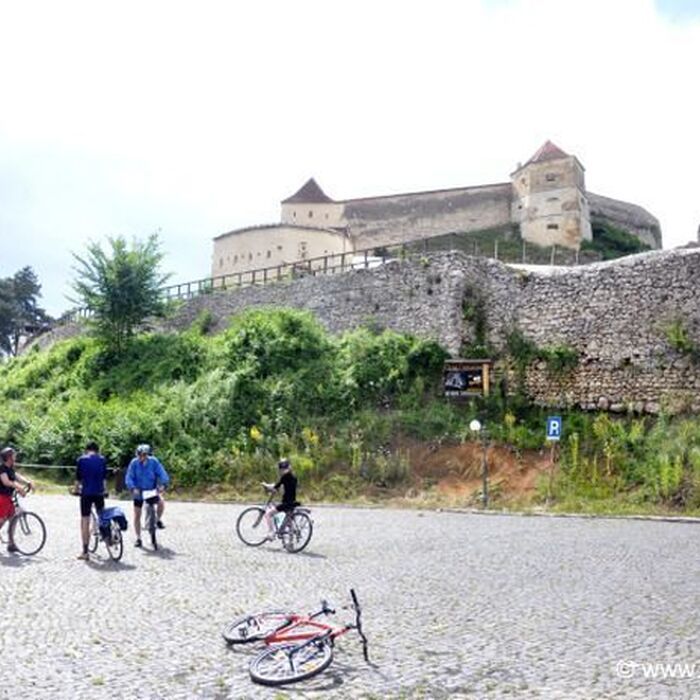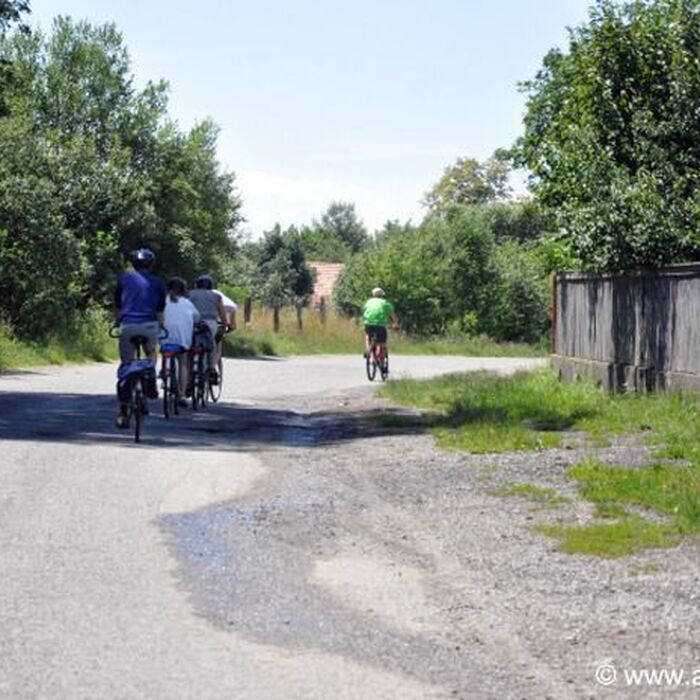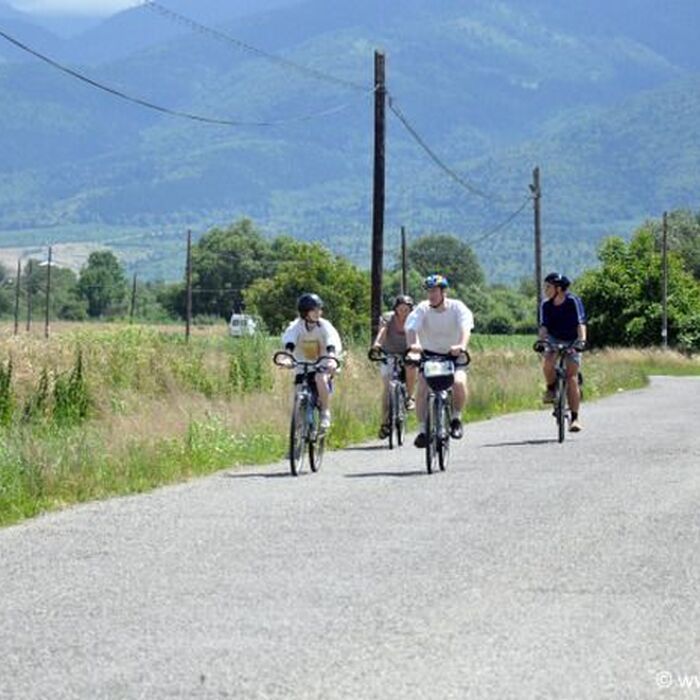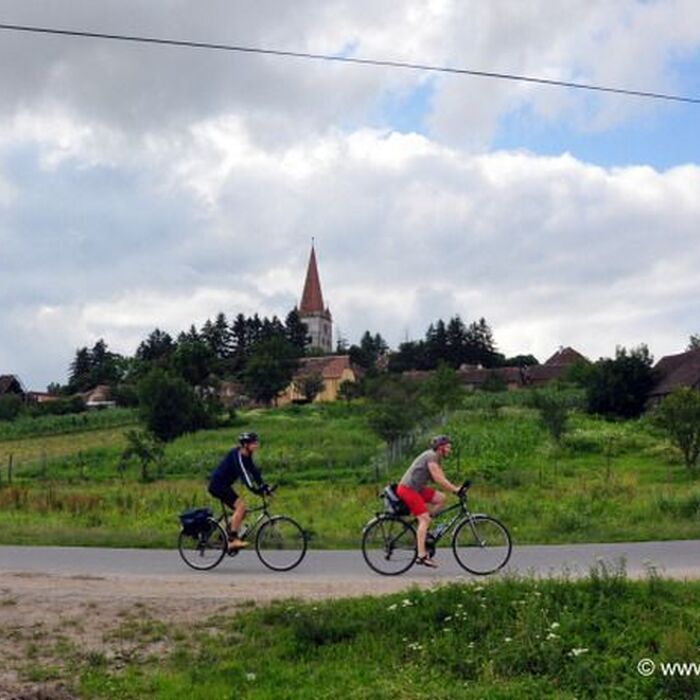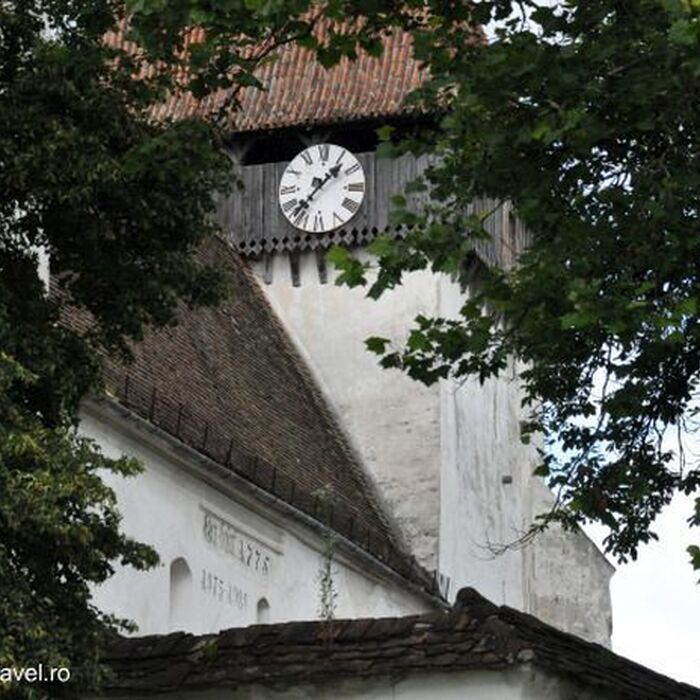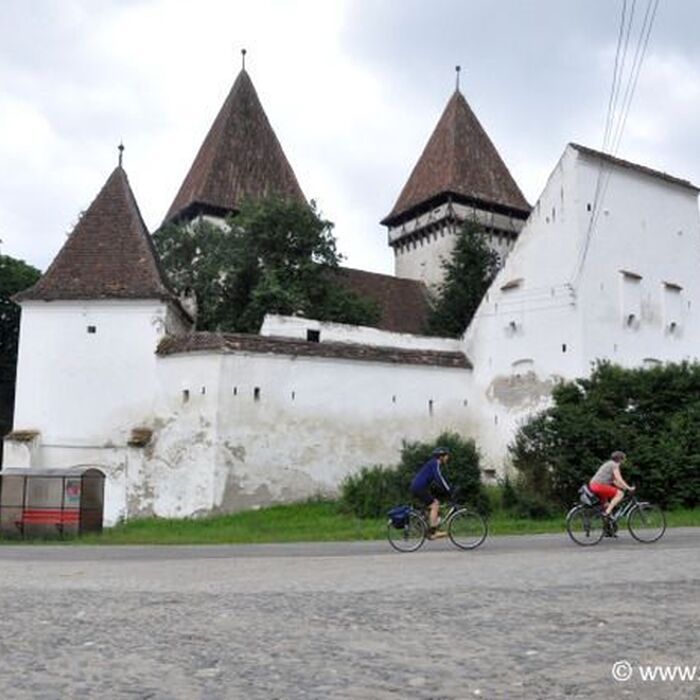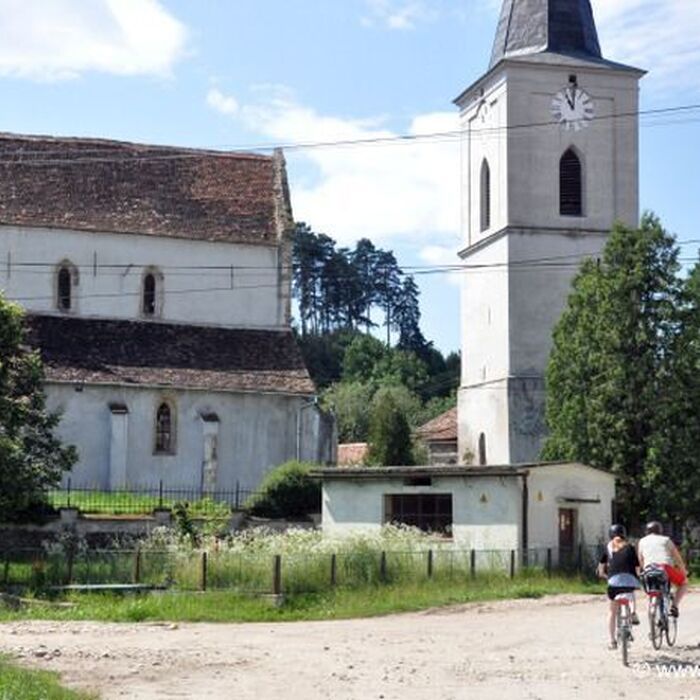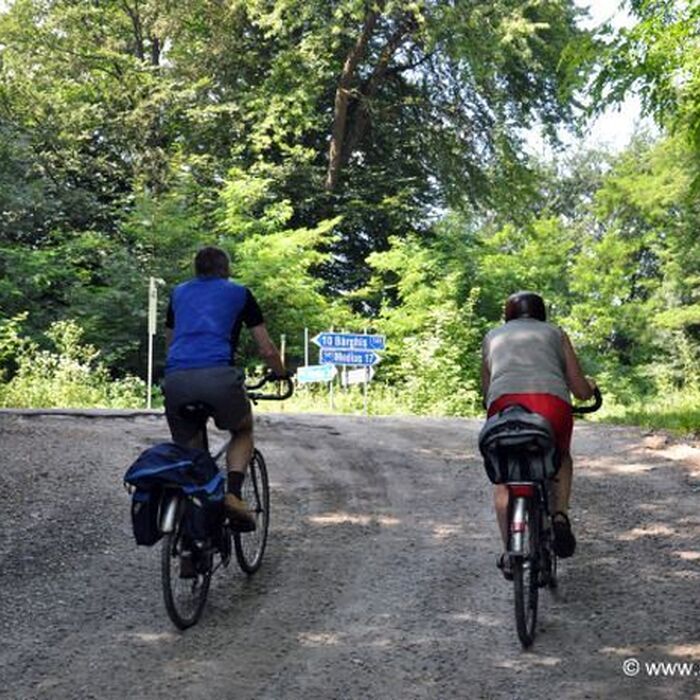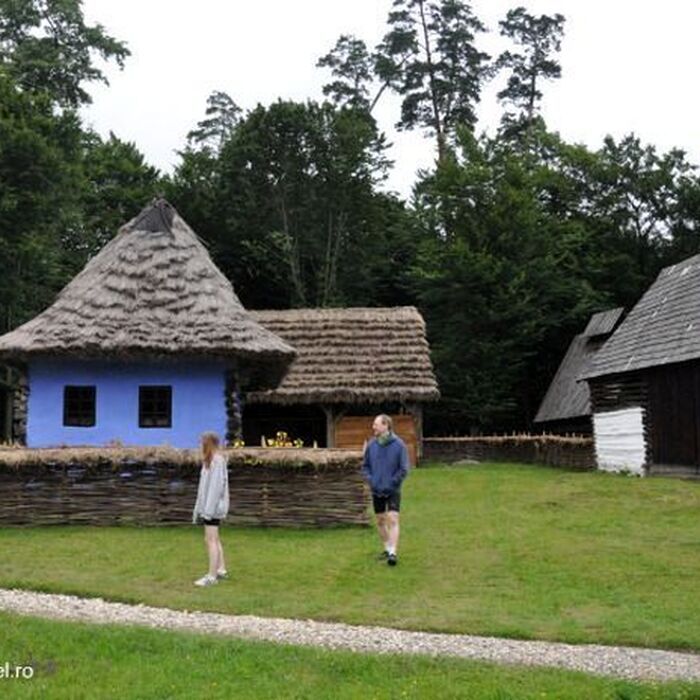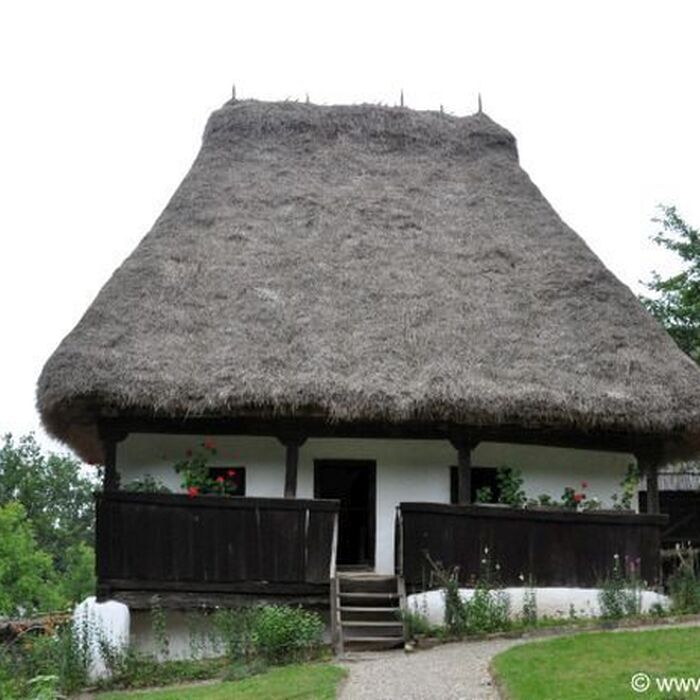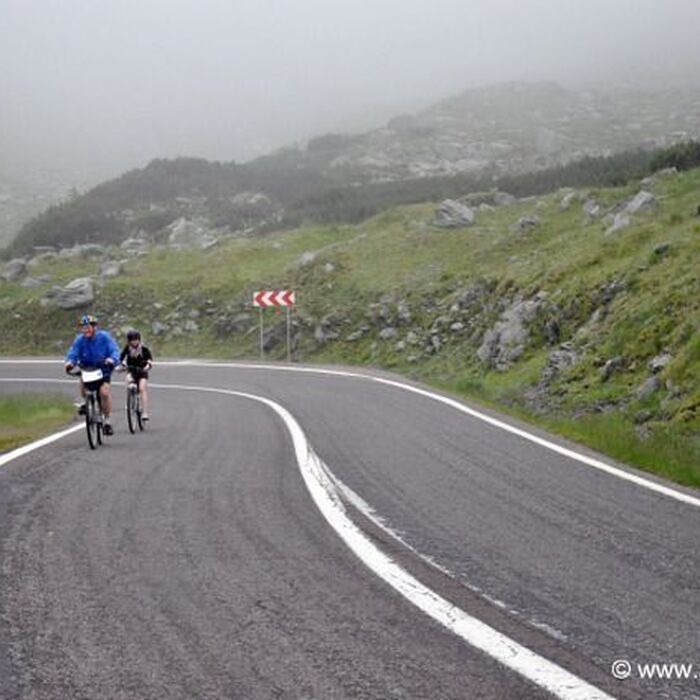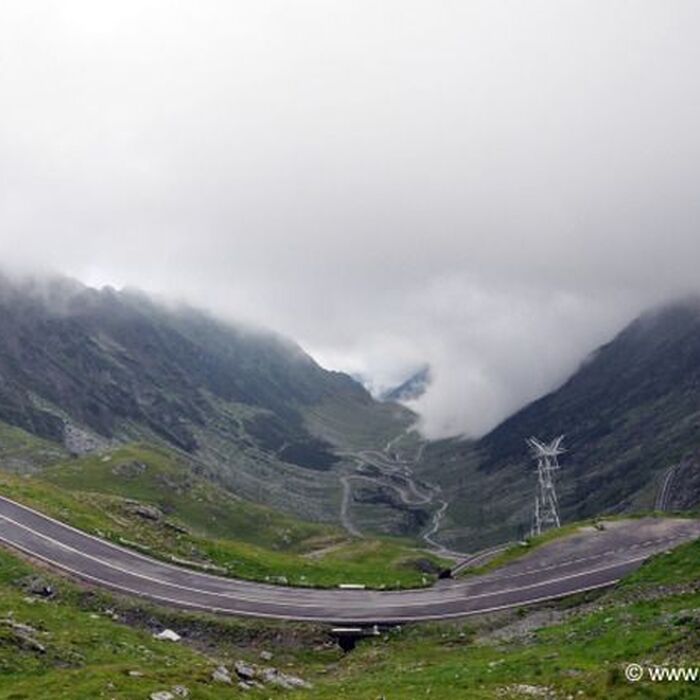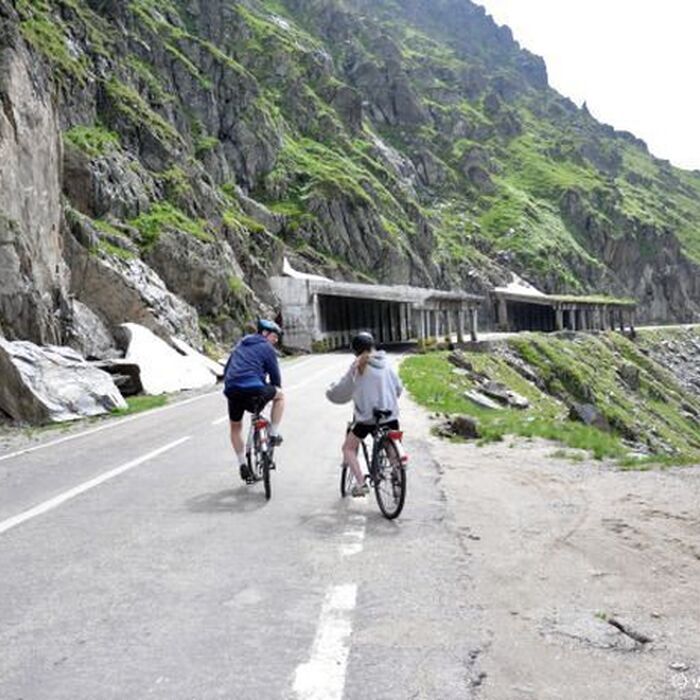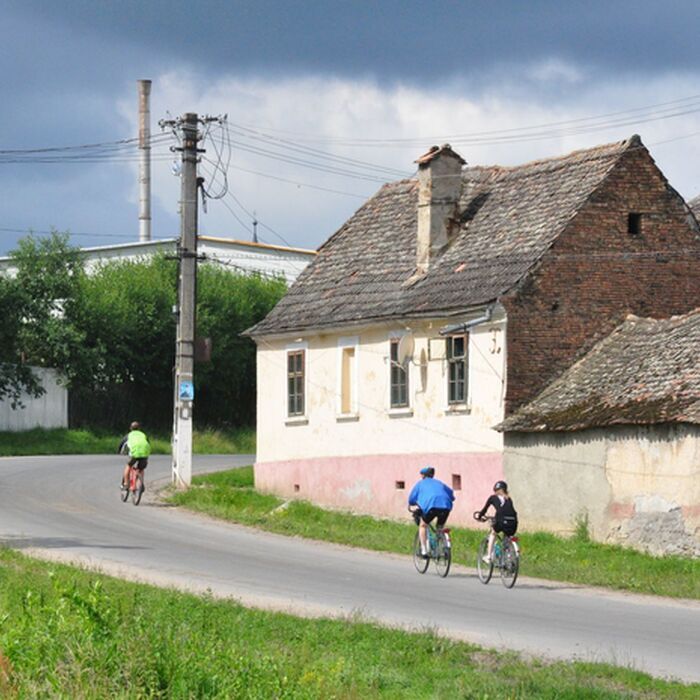The Heritage of Transylvania cycling tour - 8 days
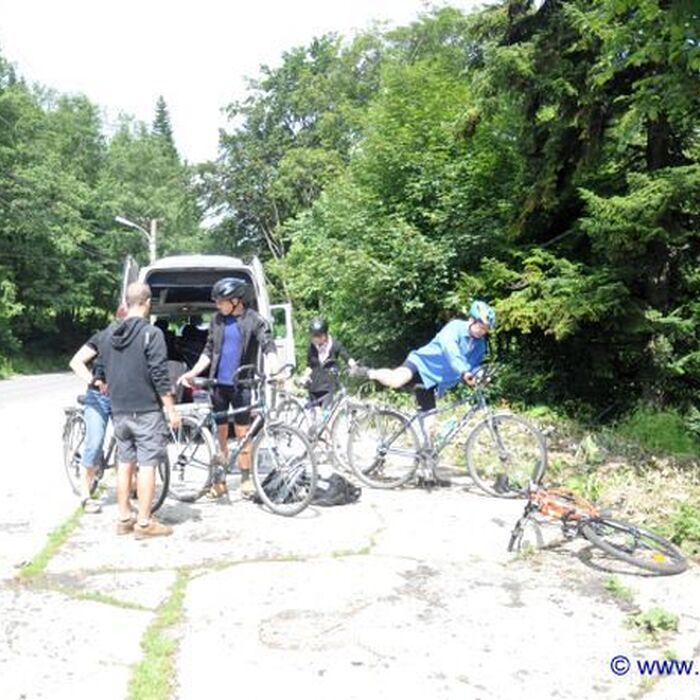



| Age range | 12-99 |
| Country Region | Arefu, Biertan, Bran, Brasov, Bucharest, Cartisoara, Otopeni airport, Sambata Resort, Sibiu, Sighisoara, Sinaia |
| Difficulty | Medium |
| Number of days | 8 |
| Operating languages | English, Romanian |
| Points of interest | Astra Open Air Village Museum, Balea Lake, Balea Waterfall, Biertan Fortified Church, Bran Castle, Brancoveanu Monastery, Poiana Brasov Resort, Poienari Fortress, Rasnov Citadel, Transfagarasan road, Vidradu Dam |
| Tour type | Active Adventure, Biking, Explorer, Family, Meeting the locals, Private tour, Small group tour, Wildlife tracks |
Description The Heritage of Transylvania cycling tour - 8 days
Discover the highlights of Transylvania on two wheels.
Rates:
- 1439 euros/person for a group of 10
- 1599 euros/person for a group of 8
- 1699 euros/person for a group of 6
- 2199 euros/person for a group of 4
The package includes:
- transfers to/from airport (Bucharest), transportation
- accommodation - 7 nights (3* hotels or boarding houses)
- breakfast
- licensed guide
- bike&helmet
Not included:
- lunches and dinners (can be provided at the places of accommodation)
- entrance fees
- flight tickets, drinks, personal expenses, tips
Introduction:
Transylvania is not just Romania's most renowned region due to the captivating legend of Dracula; it stands out as the most romantic and inspiring province in the country. Perched on a plateau rising between 305 and 600 meters and nestled within the stunning Carpathian Mountains, which soar above 2000 meters, Transylvania is one of Romania's most progressive areas. This enchanting region invites you to explore medieval towns rich in history, such as Brașov, Sighișoara, and Sibiu, each dating back to the vibrant 14th century: picture high-roofed wooden churches, majestic citadels, and iconic castles steeped in intriguing tales. The splendid mountain scenery, with its dramatic alpine peaks and picturesque villages, adds to the region’s irresistible charm. The crowning jewel of your journey will be the breathtaking Transfăgărășan road, which ascends to 2000 meters and meanders through Romania's highest mountains. No visit to Transylvania is complete without a glimpse of Bran Castle, famously linked to the enigmatic Count Dracula. This remarkable castle, with its dramatic architecture, perfectly embodies the allure and mystery of the region. Come and discover the magic of Transylvania!
Tour highlights:
Sinaia is a famous mountain ski resort and is well known as "The Carpathians Pearl". Situated on 780 m a.s.l. Along the Prahova River valley, into the Bucegi Massif of the Carpathian Mountains, Sinaia is an excellent destination for both summer and winter holidays.
Peles Castle is one of Romania's most important museums since it was a residence for several Romanian monarchs. The castle was built in Neo-Renaissance style and comprises more than 160 rooms.
Brasov - Brasov is everything that Bucharest is not: a placid, gentle, civilized city of 300,000 people nestled in the Carpathian mountains. At present, one of the leading universities is located in a historic and tourist town in Romania. Places of interest include remnants of a citadel built in 1553, The Black Church (14th - 15th centuries), the largest Gothic church in Romania, and within the territory between Vienna and Istanbul.
Bran - Dracula's Castle in Bran is no doubt one of the milestones when travelling in Transylvania. Towers, narrow corridors, hidden premises - the castle offers many interesting facts and stories, mysterious enough to incite the legend lovers
Sighisoara - A European treasure, Sighisoara is a UNESCO World Heritage Site. Located on the Tarnava Mare River, the town was built by Saxons between the 12th and 17th centuries. Eleven towers guard Sighisoara's walls, among them Tailors' Tower and Shoemakers' Tower.
Biertan - The village is known for its fortified church, built in the 14th century. It is a UNESCO World Heritage site.
Sibiu – Declared the Cultural Capital of Europe, Sibiu was once the king of the Transylvanian Saxon towns, serving as capital and dominating cultural activity. Sibiu is home to the first hospital in Romania (1292), the first pharmacy (1494), and the oldest museum in Romania, the Brukenthal Museum, opened in 1817
Astra Open Air Village Museum, the second-largest open-air museum in Europe (250 acres), is situated in the heart of a dense forest and surrounded by a beautiful lake. It features more than 300 buildings, as well as watermills and windmills, and other structures representing village architectural styles from many parts of Romania.
Transfagarasan road - built as a strategic military route, it is the highest (2042m) and most dramatic paved road in Romania. It runs North to South across the highest sections of the Carpathian Mountains. The route connects the historic regions of Transylvania and Wallachia.
Fagaras mountains – the highest mountains of Romania and the Carpathian range with the highest peak, Moldoveanu -2544m.
Balea Lac is a natural glacier lake at 2040m, 360 meters long, 240 meters wide, and 11 meters deep.
Balea Waterfall, with its 60-meter height, is one of the most famous waterfalls in Romania.
Bucharest, the capital and largest city in Romania, is a city of great contrast with numerous sights to explore.
Itinerary:
Day 1. Sinaia
Arrive at Otopeni Airport in Bucharest and transfer to Sinaia for an overnight stay.
Day 2. Bran - Poiana Brasov resort - Brasov
After a visit to the magnificent Peles Castle in Sinaia, we are transferred to the Paraul reception. You cycle down the mountain road to Bran Castle, where we stop for a visit and lunch. Later, we drive to Rasnov and start biking through the Postavarul mountains to Poiana Brasov ski resort (1030m). A pleasant descent through meadows and great views to Brasov awaits you. We stay overnight in Brasov. Cycling distance: 40 km
Day 3. Rasnov fortress - Brancoveanu Monastery
In the morning, we visit the imposing 13th-century Rasnov Fortress. Transfer to Zarnesti town. You start biking at the end of Zarnesti with a climb to a 770m pass through a lovely forested area among small mountain villages and pastures, followed by a downhill ride in a beautiful valley. As you reach the foothills of the majestic Fagaras Mountains, you continue cycling through many small villages and farmland on flat terrain, with great views of the numerous valleys and ridges of the hills. You finish cycling at Statiunea Sambata mountain resort, where we stay overnight. Nearby is Brancoveanu Monastery, dating back to the 17th century. Cycling distance: 70 km
Day 4: Iacobeni Fortified Church - Sighisoara.
Today, we begin exploring the hilly region of the Sibiu–Sighișoara area, famous for its Saxon fortified churches. You will pass by numerous small villages and the fortified churches of Cincu, Dealu Frumos, Agnita, Iacobeni, Bradeni, and Apold. We end up in Sighisoara, whose old town is considered one of the most beautiful and well-preserved inhabited citadels in Europe (a UNESCO World Heritage site). Cycling distance: 90 km
Day 5. Biertan fortified church - Sibiu
After breakfast, we continue exploring the hilly region west of Sighisoara, including fortified churches. The cycling starts 25 kilometers from Sighisoara on a small, peaceful road, passing through agricultural lands, small villages, and 4 fortified churches – Biertan (UNESCO World Heritage site), Rechis, Altana, and Hosman - dating back to the 14th to 16th centuries. Today you finish cycling in the beautiful city of Sibiu (European capital of culture 2007). Free time for walks in the old town. Cycling distance: 77 km
Day 6. Astra Open Air Museum - Transfagarasan road - Balea lac
In the morning, we take a short walk in the second-largest open-air village museum in Europe, near Sibiu (Astra open-air museum). A short transfer to Cartisoara village brings us to the foothills of the Fagaras mountains, where we begin biking on the spectacular Transfagarasan road. First, we climb through nice coniferous forests, reach the cabin lift station, where we can have lunch in a small restaurant. Once you reach the tree line at about 1600 m, the alpine landscapes of the Fagaras mountains will reveal their beauty to you. You will pass near the cascade waterfalls Balea and continue cycling on the numerous serpentines climbing gradually in the valley until you reach the picturesque region of Balea Lake at 2030m, where you stay overnight. Free time for afternoon hikes around the lake. Cycling distance: 35 km
Day 7. Vidraru dam - Poienari fortress - Bucharest
After breakfast and a short transfer through a tunnel passing through the mountains, we start biking downhill, exploring the Southern slopes of the Fagaras mountains. After we leave the alpine landscapes, we enter the green gorge of the Arges River and reach the spectacular Vidraru dam (165m high dam wall). Nearby is the Poienari Fortress (former residence of Vlad Tepes, also known as Dracula). Finish cycling before Curtea de Argeș. Transfer to Bucharest for overnight. Cycling distance: 70 km
Day 8. Departure
Transfer to the airport for departure.
Details about the biking tour:
- optimal time: July - October
- number of participants: minimum 4, maximum 14.
- Transportation will be chosen according to the number of participants.
- Biking tour requires a good physical shape, with resistance to low effort, but for a long duration.
- licensed mountain guide during the entire biking tour.
Required equipment for cycling
|
Difficulty |
Average high |
Average kilometers/day |
|
|
|
|
See Classification of the biking tours
Map of visited POI's:
View route